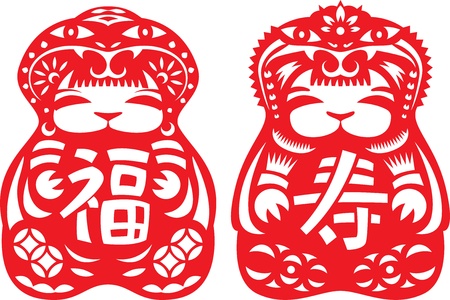1. Understanding Feng Shui Principles for Outdoor Spaces
Feng Shui is an ancient Chinese practice focused on creating harmony and balance in living environments. While it’s often associated with indoor spaces, its principles are just as powerful when applied to your home’s landscape. In the context of American homes, Feng Shui landscaping can enhance curb appeal, create a welcoming atmosphere, and promote positive energy flow around your property.
What Is Feng Shui?
At its core, Feng Shui is about arranging your surroundings to attract good chi (energy) and minimize negative influences. The goal is to create a space that feels both beautiful and balanced, supporting the well-being of everyone who lives there.
Key Feng Shui Concepts for Landscaping
| Principle | Description | How It Applies to American Homes |
|---|---|---|
| Chi Flow | Ensuring smooth movement of energy around your property | Keep walkways clear and inviting; avoid cluttered front yards |
| Yin & Yang Balance | Creating harmony between opposites (soft/hard, light/dark) | Mix soft plants with hardscape elements like rocks or pavers |
| The Five Elements | Wood, Fire, Earth, Metal, Water – each brings unique energy | Incorporate trees (wood), lighting (fire), stones (earth), metal decor (metal), fountains (water) |
| The Bagua Map | A tool for mapping energy areas of your landscape | Use it to place features like flower beds or benches where they support health, wealth, or relationships |
Why Adapt Feng Shui Outdoors?
Your yard is the first impression guests have of your home. By applying basic Feng Shui principles outside, you make your house feel more inviting and harmonious—qualities that are universally appreciated in any American neighborhood. Simple changes like smoothing out sharp corners on pathways or adding a water feature by the entrance can make a big difference in how your home feels and looks.
2. Choosing the Right Plants and Materials
Why Native Plants Matter in Feng Shui Landscaping
Native plants are an excellent choice for American homes because they are adapted to local climate and soil, making them easy to care for and environmentally friendly. In Feng Shui, healthy, thriving plants symbolize growth, abundance, and positive energy (Qi). Selecting native species helps ensure your landscape stays lush with minimal effort while supporting harmony with nature.
Popular Native Plants by Region
| Region | Examples of Native Plants | Feng Shui Benefits |
|---|---|---|
| West Coast | California poppy, manzanita, Douglas iris | Encourages vibrant energy and creativity |
| Northeast | Black-eyed Susan, Eastern redbud, blueberry bush | Supports family unity and steady growth |
| Southeast | Coneflower, dogwood, magnolia | Promotes healing and harmonious relationships |
| Midwest | Purple prairie clover, wild indigo, oak trees | Brings stability and grounding energy |
| Southwest | Palo verde, agave, desert marigold | Enhances resilience and adaptability in your home’s energy flow |
Selecting Flowers for Color and Harmony
In Feng Shui, color plays a powerful role in influencing the mood of your outdoor space. Choose flowers that match your intention for each area of the yard:
- Red or orange flowers: Attract attention and energize the entrance.
- Purple or blue blooms: Encourage calmness and serenity in backyard retreats.
- Yellow blossoms: Invite happiness and communication near patios or play areas.
- White flowers: Bring clarity and peace to meditation corners or pathways.
Sustainable Materials for Positive Energy Flow
The materials you use for landscaping also impact your homes curb appeal and Feng Shui balance. Opt for sustainable options like reclaimed wood, natural stone, or permeable pavers. These materials not only look beautiful but also help manage rainwater runoff and support local ecosystems.
Eco-Friendly Choices at a Glance
| Material Type | Sustainable Option | Feng Shui Impact |
|---|---|---|
| Paving/Paths | Permeable pavers or gravel | Keeps energy moving smoothly; reduces flooding risk |
| Borders/Edging | Bamboo or recycled plastic | Adds definition without harsh lines; supports gentle Qi flow |
| Mulch | Bark chips or leaf mulch | Nourishes soil; represents earth element stability |
Avoiding Clutter and Overgrowth
An important Feng Shui principle is keeping pathways clear and plantings tidy. Avoid overcrowding plants; instead, give each specimen room to breathe so energy can circulate freely around your yard. Regular maintenance—like trimming hedges and removing dead branches—supports a fresh flow of positive vibes throughout your property.

3. Optimizing Entryways and Pathways
Why Entryways Matter in Feng Shui
In Feng Shui, the entryway is called the “mouth of Chi,” meaning its the main point where energy enters your home. For American homes, a welcoming front door and clear pathways not only boost curb appeal but also attract positive vibes and good fortune.
Front Door Feng Shui Tips
- Color Matters: Choose a bold front door color that complements your home’s style and matches your birth element if possible. Red is popular for attracting luck, but navy, green, or classic black work well too.
- Keep It Clear: Remove clutter from porches and steps. A clean entrance invites good energy (and guests!).
- Visible House Numbers: Make sure your house number is easy to see—this helps good fortune find you.
- Add Lighting: Bright, welcoming lights guide energy to your door. Solar-powered path lights are an eco-friendly option.
Front Door Feng Shui Quick Guide
| Tip | Purpose | Easy Action |
|---|---|---|
| Bold Door Color | Attracts positive energy | Paint your door red, navy, or green |
| No Clutter | Keeps energy flowing smoothly | Sweep and organize porch weekly |
| Visible Numbers | Makes your home easy to find for guests & luck | Add large, stylish numbers near the door |
| Good Lighting | Guides chi at night, adds safety | Install solar lights along walkway and porch |
Pathways and Driveways: Guiding Good Fortune Home
- Avoid Straight Lines: In Feng Shui, gently curving walkways are preferred over straight ones. They slow down energy, making it more nourishing. If you have a straight path, add garden beds or potted plants along the edge to soften the flow.
- Keep Them Clean: Sweep pathways regularly and remove weeds or debris to keep energy moving freely.
- Add Greenery: Lining driveways with shrubs or flowers welcomes visitors—and positive chi—to your doorstep.
- No Obstacles: Ensure nothing blocks the way to your front door. Move bikes, trash cans, or tools out of sight.
Simple Pathway Enhancements for Good Energy
| Improvement | Cultural Touchpoint | User-Friendly Tip |
|---|---|---|
| Potted Plants by Walkway | Adds natural beauty and slows energy (chi) | Select low-maintenance native plants for year-round appeal |
| Smooth Surfaces | Makes entry accessible for all guests (and chi!) | Repair cracks and ensure a safe path for everyone |
| Curb Appeal Decor | Makes your home inviting and unique | Add a seasonal wreath or welcome mat reflecting your style |
| No Overgrown Shrubs | Keeps paths open for people and positive energy | Trim bushes so they don’t crowd the walkway |
4. Balancing the Five Elements in Your Garden
Feng Shui teaches us that a harmonious outdoor space brings together five essential elements: wood, fire, earth, metal, and water. Each element represents different energies, and when they’re balanced, your garden not only looks inviting but also feels vibrant and peaceful. Here’s how you can easily incorporate these elements into your American home landscape:
What Do the Five Elements Represent?
| Element | Symbolizes | Common Colors | Easy Ways to Add |
|---|---|---|---|
| Wood | Growth & Vitality | Green, Brown | Trees, shrubs, wooden benches or fences |
| Fire | Passion & Energy | Red, Orange, Purple | Outdoor fire pits, red flowers (like tulips), string lights |
| Earth | Stability & Nourishment | Yellow, Beige, Earth tones | Stone paths, clay pots, garden sculptures made of stone or terra cotta |
| Metal | Clarity & Precision | White, Gray, Metallics | Metal planters, wind chimes, garden art in silver or gold tones |
| Water | Flow & Abundance | Blue, Black | Ponds, fountains, birdbaths, small bubbling water features |
Practical Tips for Creating Balance Outdoors
- Add Variety: Mix textures and materials. For example, pair a smooth stone path (earth) with lush green shrubs (wood) and a simple metal bench (metal).
- Create Focal Points: A small fountain (water) or a fire pit (fire) can serve as attractive central features while boosting good energy.
- Select Native Plants: Choose plants that thrive in your local climate for easy care and healthy growth—this supports the wood element naturally.
- Sensible Placement: Place water features near the entryway to invite prosperity. Use fire elements away from doors for safety and balance.
- Diversify Color: Incorporate colors connected to each element through flowers, planters, or outdoor cushions.
- Avoid Overcrowding: Make sure each element has “breathing room” so your garden doesn’t feel cluttered and energy can flow freely.
American-Style Feng Shui Ideas for Your Yard
You don’t have to follow traditional Chinese designs to enjoy Feng Shui benefits. A classic American porch swing (wood), a brick patio (earth), a sleek metal mailbox (metal), colorful hanging baskets (fire), and a charming birdbath (water) all work together beautifully. Blend these features in ways that feel natural to your lifestyle and neighborhood style.
5. Common Mistakes and Easy Fixes
Typical Feng Shui Landscaping Pitfalls in American Homes
Many American homeowners unknowingly make landscaping choices that disrupt harmony from a Feng Shui perspective. Here are some common mistakes and how you can easily fix them for a more balanced, welcoming home.
Mistake 1: Blocked or Cluttered Entryways
The front entrance is the “mouth of Chi” in Feng Shui, where energy enters your home. Overgrown shrubs, cluttered porches, or misplaced decorations can block positive energy and affect your home’s curb appeal.
| Problem | Easy Fix |
|---|---|
| Overgrown bushes blocking the door | Trim shrubs regularly; keep entry clear |
| Shoes, toys, or packages piling up | Add storage benches or baskets to organize items |
| Large planters directly in front of the door | Move planters to the side for an open pathway |
Mistake 2: Sharp Angles and Harsh Lines
Many American yards feature straight walkways, pointed fences, or spiky plants. In Feng Shui, these “poison arrows” send harsh energy toward your home.
- Fix: Use curved pathways and soften landscaping edges with round shrubs or flowers. Choose plants with rounded leaves instead of sharp ones near entry areas.
Mistake 3: Neglecting the Balance of Elements
Feng Shui values a balance of the five elements: wood, fire, earth, metal, and water. Many landscapes are dominated by one element (like too much stone or too many wooden features) which can throw off harmony.
| If You Have Too Much… | Add This Element For Balance |
|---|---|
| Wood (lots of trees/fences) | Metal accents like wind chimes or garden sculptures |
| Stone/Concrete (earth) | Lush plants (wood) or water features (water) |
| Water (large pond/pool) | Potted flowers (fire) or decorative rocks (earth) |
Mistake 4: Ignoring Lighting and Nighttime Appeal
Poor outdoor lighting can make your home feel uninviting after dark and disrupts energy flow.
- Fix: Use warm solar lights along pathways and at the entrance. Avoid harsh floodlights; opt for soft illumination that highlights landscaping features and creates a welcoming glow.
Mistake 5: Dead Plants and Patchy Lawns
Bare spots, dying plants, or neglected gardens signal stagnant energy. They can also drag down your home’s curb appeal.
- Fix: Replace dead plants promptly. Reseed patchy lawns and consider easy-care native plants for ongoing health and vibrancy.
Your Quick-Reference Guide to Feng Shui Landscaping Fixes
| Mistake | Quick Solution |
|---|---|
| Cluttered entryway | Keep path open and tidy; use organizers |
| Straight paths/sharp corners | Add curves with edging or plantings |
| Lack of element variety | Add décor or plants representing missing elements |
| Poor lighting at night | Add warm, gentle landscape lights |
| Dying plants/lawn issues | Refresh with new plantings; choose hardy varieties for your region |


